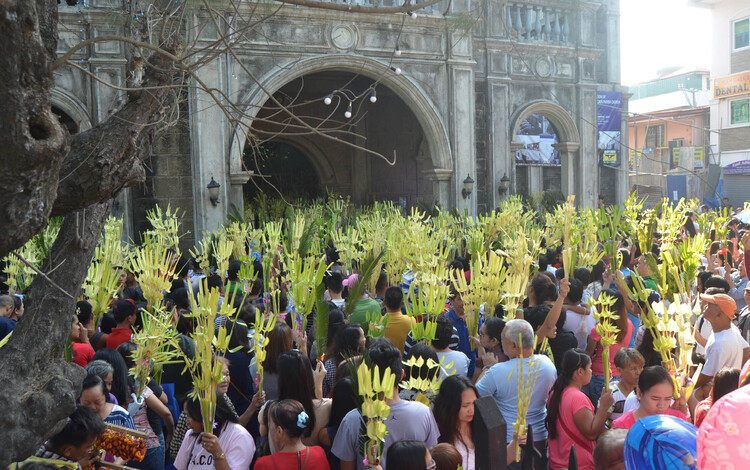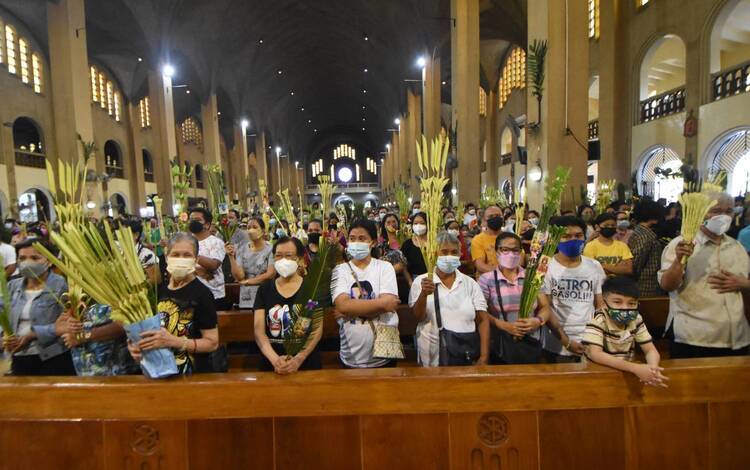Palm Sunday in the Philippines is a vibrant and deeply religious celebration that marks the beginning of Holy Week, leading up to Easter Sunday. Rooted in centuries-old traditions and infused with Filipino cultural flair, this significant day holds profound meaning for millions of Catholics across the archipelago.

On Palm Sunday, streets and churches come alive with fervor as faithful parishioners gather to commemorate Jesus Christ’s triumphant entry into Jerusalem. The festivities typically commence with the blessing of palm fronds, symbolizing the palm branches strewn in Christ’s path as he rode into the holy city. These blessed palms hold great significance, believed to bring protection and grace to homes when displayed after the ceremony.
In the Philippines, Palm Sunday is a spectacle of devoutness and pageantry. Communities eagerly prepare for the occasion, adorning churches and streets with intricate palm decorations and vibrant banners. The faithful dress in their Sunday best, often wearing intricately woven palm leaves or carrying palm branches as they join processions reenacting Jesus’ entry into Jerusalem.
One of the most notable Palm Sunday traditions in the Philippines is the “Salubong,” meaning “meeting” or “welcome.” This dawn ritual depicts the reunion of Jesus with his mother, Mary, after his resurrection. In towns and cities throughout the country, devotees gather before dawn for the Salubong procession. Here, statues of Jesus and Mary are carried through the streets, adorned with flowers and illuminated by candles, amidst joyful singing and prayers.
As the statues of Jesus and Mary draw near to each other, a dramatic reenactment ensues, symbolizing the moment of their reunion. A young girl representing the Virgin Mary, veiled in white, stands beneath a beautifully adorned arch, while a boy portraying Jesus, dressed in resplendent robes, approaches from another direction. As the two figures converge, there is a moment of silence before the veiled Mary’s veil is lifted, revealing her joyful countenance, symbolizing her joy at being reunited with her resurrected son. This poignant and visually stunning spectacle is often accompanied by the joyful pealing of church bells and the jubilant cheers of the faithful.

Throughout the day, Palm Sunday masses are held in churches across the country, where the faithful receive blessed palm leaves and participate in solemn services commemorating Christ’s passion and sacrifice. It’s a time of reflection, repentance, and renewal of faith as Filipinos prepare to journey through Holy Week, culminating in the joyous celebration of Easter Sunday.
Palm Sunday in the Philippines is not merely a religious observance but a testament to the rich tapestry of faith, culture, and tradition that defines Filipino Catholicism. It’s a day where the past and present converge, uniting believers in a shared expression of devotion and reverence for the sacred mysteries of Christ’s life, death, and resurrection.
